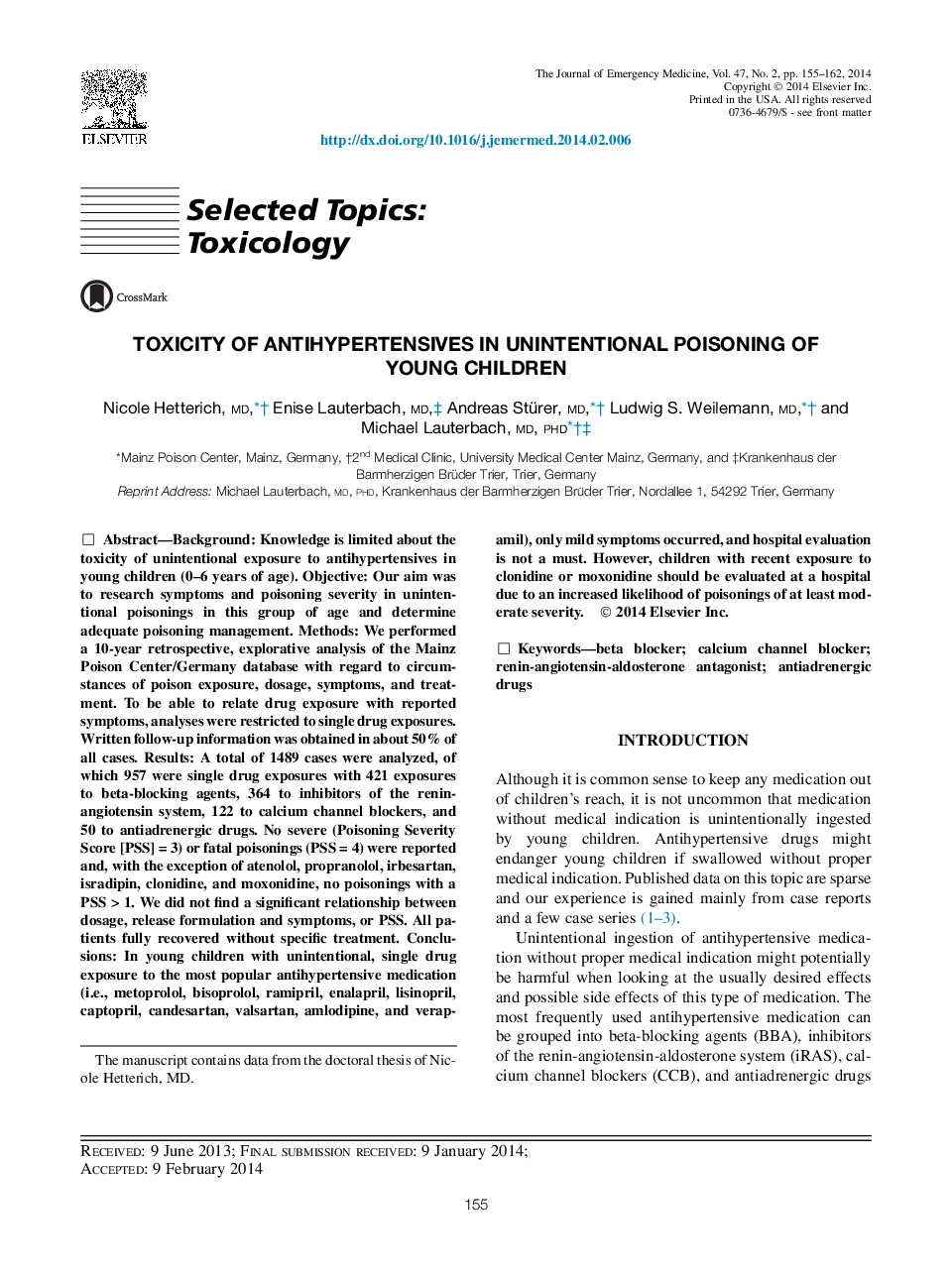| Article ID | Journal | Published Year | Pages | File Type |
|---|---|---|---|---|
| 3247090 | The Journal of Emergency Medicine | 2014 | 8 Pages |
BackgroundKnowledge is limited about the toxicity of unintentional exposure to antihypertensives in young children (0–6 years of age).ObjectiveOur aim was to research symptoms and poisoning severity in unintentional poisonings in this group of age and determine adequate poisoning management.MethodsWe performed a 10-year retrospective, explorative analysis of the Mainz Poison Center/Germany database with regard to circumstances of poison exposure, dosage, symptoms, and treatment. To be able to relate drug exposure with reported symptoms, analyses were restricted to single drug exposures. Written follow-up information was obtained in about 50% of all cases.ResultsA total of 1489 cases were analyzed, of which 957 were single drug exposures with 421 exposures to beta-blocking agents, 364 to inhibitors of the renin-angiotensin system, 122 to calcium channel blockers, and 50 to antiadrenergic drugs. No severe (Poisoning Severity Score [PSS] = 3) or fatal poisonings (PSS = 4) were reported and, with the exception of atenolol, propranolol, irbesartan, isradipin, clonidine, and moxonidine, no poisonings with a PSS > 1. We did not find a significant relationship between dosage, release formulation and symptoms, or PSS. All patients fully recovered without specific treatment.ConclusionsIn young children with unintentional, single drug exposure to the most popular antihypertensive medication (i.e., metoprolol, bisoprolol, ramipril, enalapril, lisinopril, captopril, candesartan, valsartan, amlodipine, and verapamil), only mild symptoms occurred, and hospital evaluation is not a must. However, children with recent exposure to clonidine or moxonidine should be evaluated at a hospital due to an increased likelihood of poisonings of at least moderate severity.
